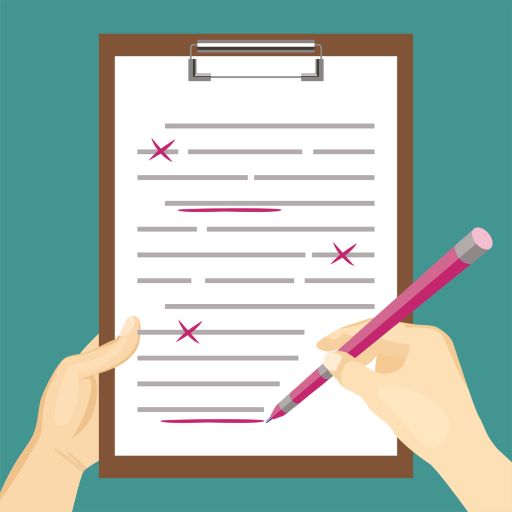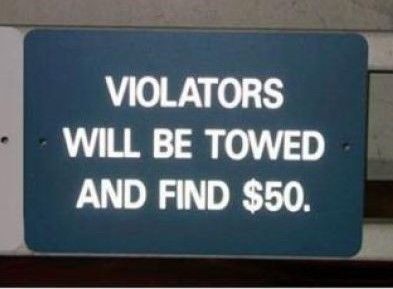
The best way to find spelling and grammar errors is to push send. Suddenly, you spot the typos. Am I right? As a longtime marketer and lifelong writer, typos are the pesky little things that continue to confound and frustrate because no matter how much you try, you can’t eliminate them entirely.
After spotting a typo in a piece that I had carefully proofread more than once, I decided to do a little research to find out why typos happen. What I discovered made me feel better – and provided new insight into how to minimize their impact.
What is a typo?
There’s no sugarcoating it. A typo is an error made when typing. It happens when you’re writing an email (especially when you’re grinding through a full inbox). It happens when you’re concentrating on writing an article, putting together a presentation, or summarizing important research findings. And it happens all the time when you’re texting.
I had a boss who was fond of saying, “There’s no such thing as a marketing emergency.” While I agree that a marketer’s mistake is never on par with the life or death on-the-job consequences of healthcare professionals or frontline emergency responders, typos often have ramifications that go beyond a minor “oops” factor. They can damage brand credibility, cost a company money, and be downright embarrassing. Consider exhibits A, B, and C.
Exhibit A – Thou shalt throw away your bible.
Back in the 1600s, a publisher released a bible with one missing word. That doesn’t sound like a big deal, right? But the word was “not,” and it was missing in a conspicuous spot. The seventh commandment erroneously directed: “Thou shalt commit adultery.” The mistake caused a major uproar with Parliament ordering all copies destroyed and fining the publisher 3,000 pounds, a hefty sum in the 17th century.
Exhibit B – A typo etched in stone.

The prestigious Lincoln Memorial in Washington, D.C., took more than eight years to build. However, all that time didn’t prevent an engraver’s spelling goof that resulted in a permanent typo. Along the north wall, the text of President Lincoln’s second Inaugural Address is etched into the stone. But, if you look closely, it says, “HIGH HOPE FOR THE EUTURE.” Even though the bottom line of the “E” has been filled in with lighter material, the typo remains visible as a permanent reminder of the power of proofreading.
Exhibit C – One writer’s OMG is everyone else’s LOL.
Some typos are funny. Still, no marketing or communication professional wants their mistake to go viral.



So, how do typos happen?
Contrary to popular belief, typos don’t always happen because you’re in a rush, careless, or lazy. (That’s the part that makes me feel better!) Psychologists explain that most typos happen because you’re concentrating on conveying meaning through what you write. As you focus, your brain generalizes the “simpler” parts of the task, like turning letters into words.
When we go back to read what we’ve written before sharing it with the world, our brains know what we are trying to convey, so it’s harder for us to spot our own typos. Our brains help us by mapping out familiar, everyday things so we can concentrate on higher-level tasks. Think of the days when you drive to work without remembering anything about your commute. Your brain handles the task on autopilot while you think about what you have to do or the presentation you’ll be making later in the day. When we write something important like an article or something routine like an email, our brains know where we were going, so they sometimes overlook the missing word or incomplete sentence.
Unfortunately, this is the same reason why your typos will jump out at your reader. Their brains are seeing your message for the first time and focusing on figuring out the meaning. A typo stops them in their tracks.
The good – and bad – news about proofreading
Typos aren’t inevitable. In fact, scientists say humans are remarkably good at catching typos as they happen. As we type, we often know we’ve made a mistake even before the result shows up on the screen. We instinctively hit the backspace button, make the correction, and keep writing. (I just did it twice as I typed the previous sentence!) In other words, we prevent a lot of typos in real-time.
However, spotting the typos that sneak through is a little more difficult. Even when we take full advantage of spell check and AI-powered assistance like Grammarly, we still need to proof what we write the old-fashioned way. The challenge is tricking our brain into thinking it’s seeing it for the first time.
5 smart ways to spot typos
I enjoy proofreading. If I can’t find at least a few things to correct, I get nervous. I also know the spelling and grammar mistakes I frequently make, so my brain is trained to look for them first when I shift from writing to proofreading mode. And I also know that if I start playing around with the wording of an email, I need to spend an extra minute re-reading it before pushing send. Still, those things alone won’t catch every typo. Here are my most effective proofreading tips.
1. Make it unfamiliar.
Your brain knows what you meant to type. Take it off autopilot by changing the font or background color when it’s time to proof.
2. Print it out.
Along the same lines as tip #1, print what you’ve written. Then, use a blank piece of paper to block out the text, so you only reveal and proof one line at a time.
3. Listen to it.
This is my favorite because it catches not only missing words but also awkward phrasing and run-on sentences. In the old days, I would read what I wrote out loud. But now, I use the “Read Aloud” feature in Word. It’s an effective way to review an article from a reader’s perspective.
4. Read it backward.
I learned this one in journalism school. Today, I rely on a combination of spell check, Grammarly Premium, and Read Aloud, so I don’t use this method as much anymore. But it’s highly effective and is a good, no-tech way to get the job done.
5. Give it time.
It’s not always possible, but the single best way to spot typos in something you’ve written is to let it sit overnight or even a couple of days. Then, go back to it and read it with fresh eyes. In addition to finding the typos, you’re likely to identify ways to punch up your sentences and enhance the readability.
Typo-free?
I used three of the methods above to proof this article. Here’s hoping there are no glaring errors!
Compelling content doesn’t just happen. When you’re looking to create articles, blogs, emails, or posts that hook your audiences, convey your marketing messages, and generate results, turn to Write Hand Ann.
More about writing from Write Hand Ann
Say more. Write less. How to streamline wordy sentences
